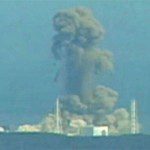In light of the rapidly evolving crisis of Japanese reactors, U.S. nuclear experts said America makes widespread use of the same aging reactors as those that have exploded in Japan. Five of the six reactors at the Fukushima Daiichi 1 site are General Electric Mark I Boiling Water Reactors, including Unit 1, which suffered an explosion that destroyed part of its containment building on Saturday, and Unit 3, which uses plutonium-based MOX fuel and has been the subject of major efforts to cool the reactor.

Michael Mariotte, executive director and the chief spokesperson for the Nuclear Information and Resource Service, said: “Nearly one out of five – 23 – of the operating reactors in the U.S. use the GE Mark I design. All but two of these began commercial operation between 1971 and 1976. The U.S. Nuclear Regulatory Commission has approved 20-year license extensions for 18 of these aging GE Mark I reactors. Two applications are currently under review; three reactors have not filed for license renewal. When the reactor designs are the same, and the reactor’s ages are the same, comparisons seem more than appropriate – indeed, it would be irresponsible not to understand what lessons may be learned from the Japanese experience that would apply to so many aging U.S. reactors that are still in use.”
The experts also said that emergency planning in the U.S. for nuclear accidents is in disarray.
“Were a nuclear accident to occur in the U.S., we are woefully unprepared to deal with it,” said Daniel Hirsch, a lecturer in Nuclear Policy at the University of California, Santa Cruz and president of the Committee to Bridge the Gap. “The agencies can’t agree on who would be in charge of long-term cleanup, what standards would be applied, or where the money would come from. The attitude is basically the opposite of planning: ‘If there is a nuclear release, we’ll try to figure out something then.'” See text of a March 13, letter from Ed Markey (D-MA) to President Obama here.
The nuclear catastrophe in Japan illustrates in vivid terms the risks to U.S. taxpayers and ratepayers of taking on even more of the risk of paying for nuclear power.
“For decades, Wall Street hasn’t been willing to invest in new reactors because of their enormous cost and risk. Obviously, Wall Street has it right,” said Dr. Mark Cooper, senior fellow for economic analysis at the Institute for Energy and the Environment, Vermont Law School. “This is yet another example of how a multi-billion dollar investment can turn into a multi-billion dollar liability within minutes. The only way that new reactors will be built in the United States is if the economic risk is put upon the taxpayer through federal loan guarantees and/or upon ratepayers through advanced cost recovery.”
President Obama has requested an additional $36 billion in loan guarantee authority for new reactors in FY2012. If authorized, this would make a total of $54.5 billion in nuclear loan guarantees. Of the currently authorized $18.5 billion in nuclear loan guarantees, $8.3 billion has been allocated to Southern Company and its partners for two proposed reactors in Georgia. Ratepayers in Florida, Georgia, and South Carolina are paying the construction of proposed new reactors, most of which have been delayed post-2020. Several others states, including Iowa, Indiana and Missouri, are also considering legislation that will allow utilities to charge ratepayers in advance for the cost of new reactors.
As in Japan’s Fukushima Unit 3, the use of plutonium fuel (MOX) in U.S. reactors poses special radiation and safety risks, the experts said. One of the Japanese reactors under risk of continued fuel melting or explosion is now operating for the first time with part of the core being plutonium fuel. This plutonium mixed oxide (MOX) fuel, shipped from Europe and inserted in Fukushima Unit 3 in September 2010, poses greater risks than traditional uranium fuel. MOX, made from plutonium which is capable of being used in nuclear weapons, is harder to control during reactor operation and results in a more serious radiation release in the event of an accident. The plutonium in the MOX is a result of the reprocessing of Japanese spent fuel and that reprocessing program. MOX use has long been opposed by public interest groups due to safety, cost and non-proliferation concerns.
Tom Clements, Southeastern nuclear campaign coordinator, Friends of the Earth, said: “In the U.S., the Department of Energy is considering use of MOX fuel in the Tennessee Valley Authority’s Browns Ferry reactors, of the same aging Mark I boiling water reactor design as Fukushima Unit 3. Analysis by the Tennessee Valley Authority of unsafe MOX fuel made from surplus weapons plutonium must be halted and the $850 million request related to this in President Obama’s FY2012 must be rejected. The cost of the MOX plant now under construction at the Department of Energy’s Savannah River Site has skyrocketed from $1.4 billion in FY 2004 to $4.9 billion in FY 2009 and has become a program driven by special interests that profit from it.”


